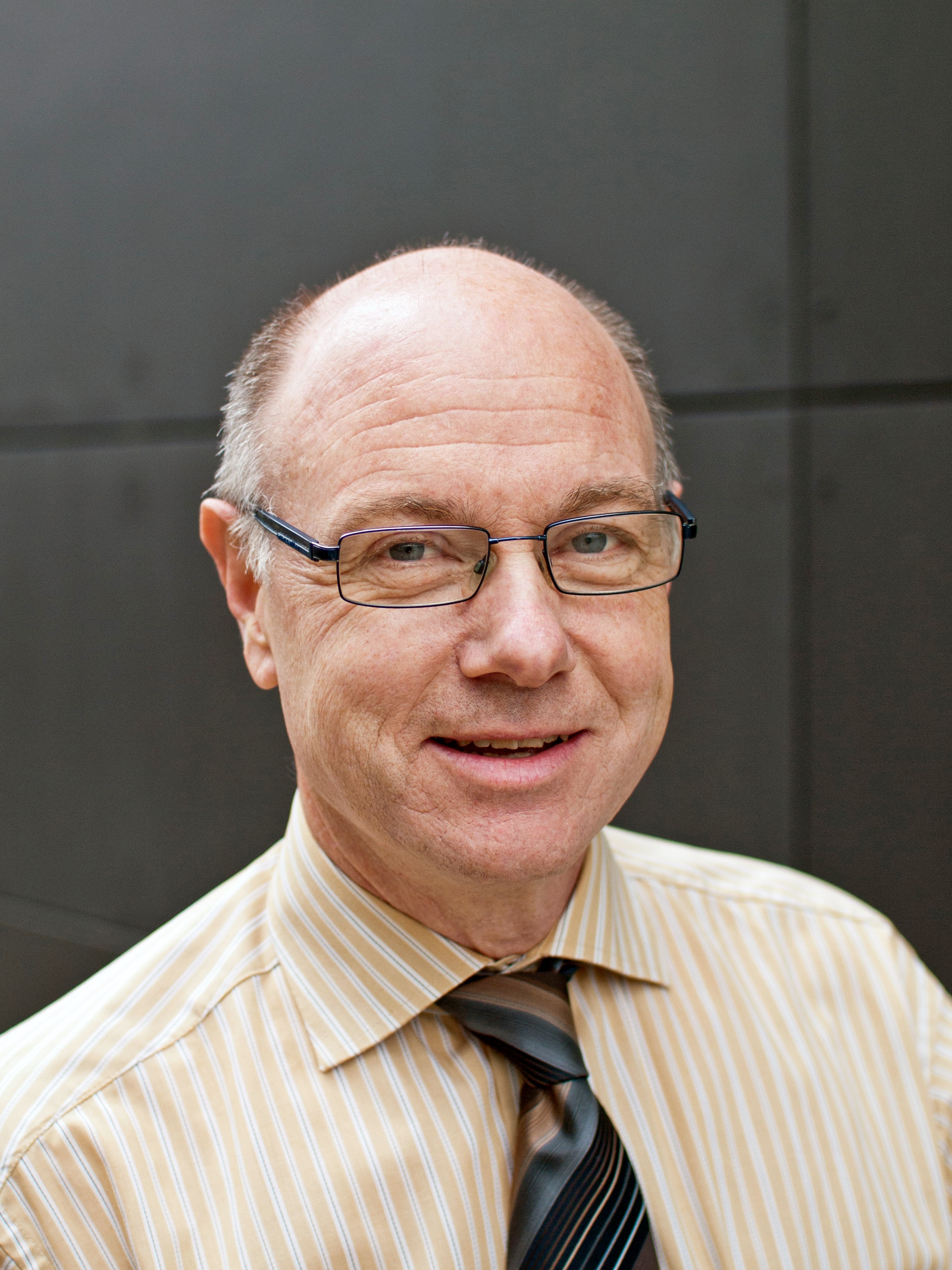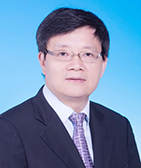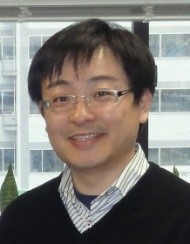Plenary Speakers
| Name | Cameron Tropea |  |
|||||
| Titles & Positions | Prof. Dr.-Ing. | ||||||
| Affiliation |
Fachgebiet Stroemungslehre und Aerodynamik Center of Smart Interfaces Technische Universitaet Darmstadt Alarich-Weiß-Straße 10, 64287 Darmstadt, Germany |
||||||
| Contact Information |
|
||||||
|
Visualization for Spray Physics | ||||||
| Abstract | Recent camera technology, offering images and movies of high spatial and/or temporal resolution, provides excellent and unexcelled insight into the physics of drop and spray dynamics. Nevertheless, careful attention must be paid to optics-limited resolution and only with a solid understanding of the hydrodynamics involved, can the full potential of visualization be realized. In this talk such issues will be addressed using a selection of application examples, including primary atomization, secondary atomization, ligament breakup through stretching, drop/wall interaction, wetting/dewetting phenomena, and nucleation and freezing of supercooled liquid drops (SLD). Each example will include not only the visualizations, but also the underlying hydrodynamic hypothesis and the additional physical insight arising from the observations. | ||||||
| Biographical Sketch | Cameron Tropea graduated from the University of Toronto in Engineering Sciences, followed by a Masters degree in Mechanical Engineering (1977). He completed his Dr.-Ing. in Civil Engineering at the Technical University of Karlsruhe (1982) and his Habilitation in Fluid Mechanics at the University of Erlangen-Nürnberg (1991) where he was appointed as Professor of Fluid Mechanics until 1997. This was followed by an appointment to his current chair of Fluid Mechanics and Aerodynamics at the Technische Universität Darmstadt. Currently Editor-in-Chief of the Springer journal Experiments in Fluids and past Director of the Center of Smart Interfaces (CSI) in the period 2007-2014, his research interests include Optical Measurement Techniques in Fluid Mechanics, Interfacial Transport Phenomena, Atomization and Spray Processes and Unsteady Aerodynamics. He has recently been appointed a member of the Scientific Commission of the Council of Science and Humanities in Germany. | ||||||
| Name | Hui Hu |  |
|||||
| Titles & Positions | Martin C. Jischke Professor in Aerospace Engineering | ||||||
| Affiliation |
Director, Advanced Flow Diagnostics and Experimental Aerodynamics Laboratory Department of Aerospace Engineering Iowa State University, Ames, Iowa 50011, USA |
||||||
| Contact Information |
|
||||||
| Presentation Title | Development of Advanced Measurement Techniques to Characterize Multiphase Flows Pertinent to Aircraft Icing Phenomena | ||||||
| Abstract | Aircraft icing, which is a very complex multiphase micro-physical phenomenon, involves in complicated interactions among multiphase flows (i.e., gaseous incoming airflow, super-cooled liquid water droplets/surface water film flows, and ice accreting solid airfoil surface) coupled with unsteady heat transfer (i.e., the release of the latent heat of fusion) and dynamic phase changing (i.e., solidification) processes. The research progress made in the speaker’s laboratory in developing novel flow diagnostic techniques to characterize the complex multiphase flows pertinent to aircraft icing phenomena is presented. A novel molecular tagging technique is introduced at first to achieve simultaneous measurements of droplet size, flying velocity and transient temperature of in-flight liquid droplets, which is pertinent to the dynamic and thermodynamic behaviors of flying super-cooled droplets before impacting onto airfoil surfaces to start ice accretion process. Then, a novel digital image projection (DIP) technique is also introduced to achieve quantitative measurements of the droplet/film thickness distributions to quantify the dynamic impact process of droplets onto solid surface with different impact velocities and surface wettability. Based on the time-resolved DIP measurements, the time evolution of the droplet shapes in the course of the dynamic impact process, i.e., the spreading, receding, and oscillating of the impinging droplets, under different test conditions are revealed clearly and quantitatively. The quantitative measurements are very helpful to elucidate the underlying physics for better understanding of the important micro-physical processes pertinent aircraft icing phenomena in order to develop more effective and robust anti-/de-icing strategies to ensure safer and more efficient aircraft operation in cold weather. | ||||||
| Biographical Sketch | Dr. Hui Hu is the Martin C. Jischke Professor in Aerospace Engineering at Iowa State University. Dr. Hu received his BS and MS degrees in Aerospace Engineering from Beijing University of Aeronautics and Astronautics (BUAA) in China, and a PhD degree in Mechanical Engineering from the University of Tokyo in Japan. Dr. Hu is an ASME Fellow and AIAA Associate Fellow. His recent research interests include laser-based advanced flow diagnostics; aircraft icing physics and anti-icing/de-icing technology; liquid fuel atomization and spray flow characterization; film cooling and thermal management of gas turbines; wind turbine aerodynamics and rotorcraft aeromechanics; bio-inspired aerodynamics; micro-flows and micro-scale heat transfer in microfluidics or “Lab-on-a-Chip” devices. Dr. Hu received several prestigious awards in recent years, including 2006 NSF-CAREER Award, 2007 Best Paper in Fluid Mechanics Award (Measurement Science and Technology, IOP Publishing), 2009 AIAA Best Paper Award in Applied Aerodynamics, 2012 Mid-Career Achievement in Research Award of Iowa State University, 2013 AIAA Best Paper Award in Ground Testing Technology, and 2014 Renewable Energy Impact Award of Iowa Energy Center. Further information about Dr. Hu’s technical background and recent research activities is available at: http://www.aere.iastate.edu/~huhui/ | ||||||
| Name | Martin Sommerfeld |  |
|||||
| Titles & Positions | Prof. Dr.-Ing | ||||||
| Affiliation |
Multiphase Flow Group Otto-von-Guericke University (Magdeburg) Zeppelinstraße 1, D-06130 Halle (Saale) Germany |
||||||
| Contact Information |
|
||||||
| Presentation Title | Multi-scale experimental analysis of binary droplet collisions | ||||||
|
Abstract (Download Here) |
Binary collisions of liquid droplets in a gaseous environment have been analysed experimentally for several decades, mainly aiming at deriving appropriate collision maps characterising the outcome of a the collision processs in termas of the non-dimensional impact parameter (i.e. lateral displacement of droplets centres upon contact) and the Weber-number (i.e. determined by the relative velocity and the diameter of the smaller droplet). This information is essential in modelling droplet collisions in the frame of a Euler/Lagrange calculation as commonly used for spraying systems in many engineering fields. Unfortunately such collision maps depend on a number of other parameters not involved in the two parameters impact parameter and Weber-number. These are mainly size ratio, viscosity ratio and properties of the gaseous environment. Therefore, a development of more generalised models (Sommerfeld 2016) including theoretically derived boundary lines require further detailed experiments for a range of liquid properties. The present experimental studies were done using two vibrating orifice droplet generators (droplet size between 300 and 800 μm) and a backlight illumination combined with two high-speed cameras (Kuschel & Sommerfeld 2013; Sommerfeld & Kuschel 2016). Measurements for visualising the entire collision process were done with a lense yielding a resolution on 25 μm/pixel, in order to determine the collision outcome and to obtain the number and size of possible satellite droplets. The emphasis in these studies was the modification of the collision maps for a range of liquid viscosities between 1 mPa⋅s and 60 mPa⋅s (Figure 1 a) and different droplet size ratio, however concentrating first on identical viscosity. High resolution imaging was performed using between 2 and 5 μm/pixel. In these studies, details of the collision process were resolved, such as the occurrence of air cushions between the interacting liquids (Figure 1 b). Moreover, the collision behaviour of droplets with different viscous liquids was of interest (Figure 1c), a situation found in many applications. For this purpose, backlightning and a laser light sheet were used and one liquid was doped with fluorescent dye. |
||||||
| Biographical Sketch |
Martin Sommerfeld (Prof. Dr.-Ing) studied aeronautical engineering at the Technical University Aachen and received his Diploma in 1981. He completed his Doctoral degree (shock wave propagation through gas-particle mixtures) at the same University in 1984. Then he spent one year at Kyoto University Japan on a research fellowship. In 1986 he moved to the Institute of Fluid Mechanics (Prof. Durst, University Erlangen), headed the Two-Phase Flow research group and completed a Habilitation “Modelling and Calculation of Particle-Laden Flows using the Euler/Lagrange Approach”. In October 1994 he was appointed Professor of Mechanical Process Engineering (University Halle, Germany). In 1997 he received the DECHEMA Award for contributions to multiphase flow measurements, modelling and numerical prediction. From January 2017 his research group based in Halle (Saale) belongs to the Otto-von-Guericke University Magdeburg. Martin Sommerfeld organised a continuing series of workshops on two-phase flow predictions, ASME symposia, the Int. Conf. on Multiphase Flow (ICMF 2007) and several other international conferences. He is chair of the ERCOFTAC special interest groups “dispersed two-phase flows” and “Oil & Gas” and the ProcessNet special topic group “computational fluid dynamics”. He has written 180 reviewed journal papers, 200 conference papers and several books and monographs, among that the book “Multiphase Flows with Droplets and Particles”. (2nd Edition, Crowe et al. 2012) and the ERCOFTAC Best Practice Guidelines for Computational Fluid Dynamics of Dispersed Multiphase Flows. His research activities are mainly concerned with fundamentals of dispersed multi-phase flows with the aim of developing physical models for describing relevant transport phenomena. For the analysis of multi-phase flow phenomena detailed experiments using modern optical instrumentation as well as direct numerical simulations by the Lattice-Bolzmann-Method are performed. The developed models are used in the frame of the Euler/Lagrange computational approach for allowing the prediction of industrial processes involving dispersed multi-phase flows. |
||||||
| Name | T.S. Zhao |  |
|||||
| Titles & Positions | Chair Professor of Mechanical & Aerospace Engineering Director of the HKUST Energy Institute Senior Fellow of the HKUST Institute for Advanced Study |
||||||
| Affiliation |
Department of Mechanical & Aerospace Engineering The Hong Kong University of Science and Technology |
||||||
| Contact Information |
|
||||||
| Presentation Title | Tackling Challenges in Energy Storage Using Thermo-Fluid Science | ||||||
| Abstract | The combination of energy shortage and climate change is one of the most complex challenges the world, as a whole, has had to face. The next 50 years is a vital period for human civilization and it is imperative that we revolutionize the way we produce and store energy and incorporate renewables as our primary source of energy. This talk will provide a snapshot of the future of the sustainable energy landscape and identify several game-changing technologies that will facilitate the widespread deployment of renewables. In particular, we will highlight our recent advances in fuel cell, redox flow battery, and lithium-oxygen battery technologies achieved through an interdisciplinary approach that combines thermal-fluid science and electrochemistry. The scientific issues and practical challenges pertaining to the fuel cells and advanced batteries will be discussed, with a particular emphasis on how the challenges can be addressed using thermos-fluid sciences. | ||||||
| Biographical Sketch | T.S. (Tim) Zhao is currently the Cheong Ying Chan Professor of Engineering and Environment, the Chair Professor of Mechanical & Aerospace Engineering at HKUST, the Director of the HKUST Energy Institute, and a Senior Fellow of the HKUST Institute for Advanced Study. He is an elected Fellow of the American Society Mechanical Engineers (ASME), Fellow of the Royal Society of Chemistry (RSC), and a Highly Cited Researcher by Thomson Reuters (2014, 2015, 2016, 2017). Professor Zhao combines his expertise in research and technological innovation with a commitment to creating clean energy production and storage devices for a sustainable future. He has made seminal contributions in the areas of fuel cells, advanced batteries, multi-scale multiphase heat and mass transport with electrochemical reactions, and computational modeling. In addition to 4 edited books, 9 book chapters and over 67 keynote lectures at international conferences, he has published 310 papers in various prestigious Journals. These papers have collectively received more than 12,000 citations and earned Prof Zhao an h-index of 59 (Web of Science). In recognition of his research achievements, Prof Zhao has in recent years received many awards, including the 2014 Distinguished Research Excellence Award (HKUST), two State Natural Science Awards, the Croucher Senior Fellowship award, the Overseas Distinguished Young Scholars Award (NSFC), and the Yangtze River Chair Professorship, among others. In the international community, Prof Zhao serves as Editor-in-Chief of Applied Thermal Engineering, Executive Editor of Science Bulletin, and Editor of RSC’s Energy & Environmental Science. He has served as an editorial board member for Energy & Environmental Science, Journal of Power Sources, and other 10 prestigious international Journals. |
||||||
| Name | Yuichi Murai |  |
|||||
| Titles & Positions | Professor, Dr. (Chair of Division of Energy and Environmental Systems, Faculty of Engineering) | ||||||
| Affiliation |
Laboratory for Flow Control Division of Energy and Environmental Systems Faculty of Engineering Hokkaido University N13W8, Sapporo, Hokkaido, Japan |
||||||
| Contact Information |
|
||||||
| Presentation Title | Velocity profiling rheometry for dispersed multiphase fluids | ||||||
| Abstract | Rheology of multiphase fluids involves a number of technical difficulties to be assessed experimentally. For instance, conventional rheometers based on narrow-gap Couette and capillary Poiseulli flows are hardly applicable because of multi-scale phase organization, gravity separation effect, and also heterogeneous nature both in phase and velocity distributions. We have developed a novel rheometry widely practical to multiphase fluids such as highly dense particulate fluids, bubbly liquids, foam flows, and their combination at high volume fractions. It relies on velocity profiling using ultrasound Doppler method as well as particle tracking velocimetry. The rheological property is explored from the space-time velocity distribution via momentum diffusion equation in some well-posed flow configurations regulated. The technique is therefore capable to evaluate effective viscosity, viscoelastic complex viscosity, yield stress, and non-Newtonian power-law diagnosis. Thanks to the velocity profiling informatics, the relationship between local and bulk properties can be also investigated, which is always a common interest of multiphase rheology being highlighted by multiphase shear-banding, and pseudo-turbulent eddy viscosity. In the case of real-time ultrasound monitoring, time and temperature dependent changes of these properties are also obtained on real-time manner. | ||||||
| Biographical Sketch | Yuichi Murai received his Ph.D. in Mechanical Engineering in 1996 at The University of Tokyo. He worked at Fukui University as a research associate from 1995 to 2000 in nuclear thermo-fluids engineering, and at Imperial College London from 2001 to 2002 for laser imaging techniques. He moved to Hokkaido University in 2003 to start power-saving technology, and became a professor in 2010 at Laboratory of Flow Control (LFC), Hokkaido University. His latest focuses are development of ultrasound Doppler technique for multiphase flow monitoring, frictional drag reduction of large marine vessels by bubble injection, flow control of long fuel pipeline systems, and wind tunnel experiments for various aerodynamics devices. | ||||||
Inquiries
All inquires concerning the symposium should be addressed to:
Mr Dong Liao
Department of Mechanical and Aerospace Engineering, HKUST
Tel: (852) 2358-7184
Fax: (852) 2358-1543
Email: ismtmf@ust.hk
